One of the most interesting things I did when we visited Alaska three
years ago was to learn as much as I could about the six traditional
Alaska Native cultures at the Anchorage Museum, Eklutna Historical
Park, Wrangell-St. Elias NP visitor center, and other venues around the state.
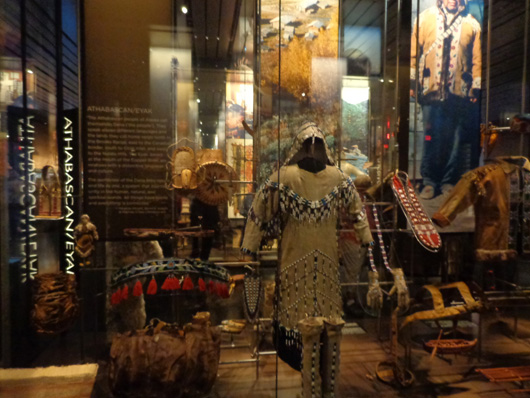
Traditional Athabascan clothing on display at the Anchorage Museum in
Summer, 2012
This was the first time I visited the Alaska Native Heritage Center,
however. This large complex (26 acres) is located just outside JBER's
Muldoon Gate, so I took the opportunity to explore it today.
RECENT ACTIVITIES
Since our return to Anchorage on Saturday we've been busy with
restocking groceries and supplies, running other errands, doing
maintenance work on the truck and Cameo, walking and cycling with the
dogs on base, journaling and editing photos, doing some trip planning, visiting
with campground neighbors, and just relaxing.
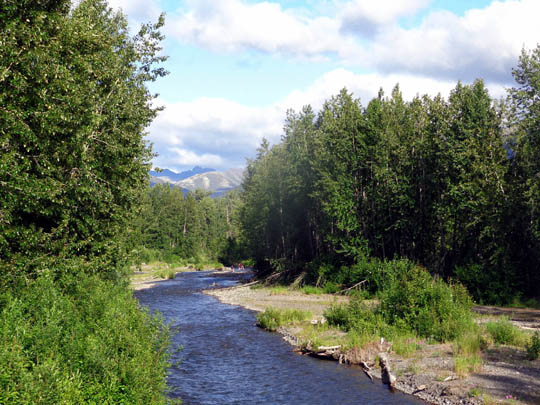
Fish Creek, from the bike path at
JBER; this is a good place to see moose, bears, and salmon.
Jim even got some very good, virtually invisible hearing aids at Sam's Club but took them
back a few days later because he could hear too much! He decided
he wasn't up to learning selective hearing again. (We learn as a child
to tune out distracting sounds.)
It was fun for a few days as he'd hear things he hasn't noticed for
years, or he'd jokingly ask me if I could type at the computer more quietly!
Maybe when his hearing gets even worse he'll try hearing aids again
. . . Maybe.
AUTUMN ALREADY??
The weather has been nice enough most days this week for me to go out and do
more hiking but I'm letting those
nasty wounds on my arm heal a bit more. The forearm where the
large flap of skin was torn loose and new skin has to grow is still
oozing just a bit and needs a couple more days to dry out before I do a
long hike. I have to keep it covered most of the time so it doesn't
become infected.
The other wounds are healing quickly, I'm not in any pain
(only the first 24 hours), and I'm able to sleep OK. I've just added to
the tapestry of scars on my body from years of clumsy trail running and
hiking.
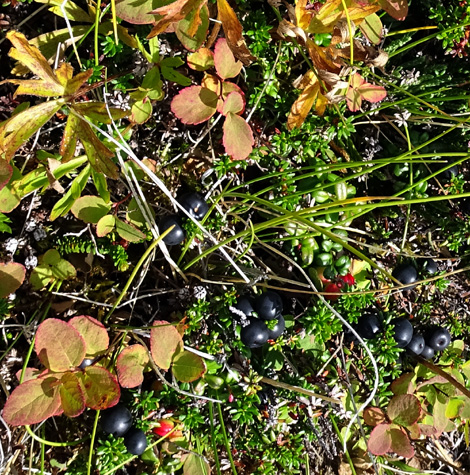
Two signs of autumn in Alaska:
ripe blueberries and leaves turning red
Twice today I heard that it is already autumn in Alaska. My goodness!
A weather person said it on TV, after commenting on Anchorage having the
second-highest number of days over 70 F. this summer since weather has
been recorded (about 64 years), and a storyteller at the Alaska Native
Heritage Center also mentioned it in reference to the cooler nights,
leaves turning, berries ripening, and animals more frantically putting
on weight for the winter.
There are also more
vacancies in our campground than I would have expected this time of
year because visitors from the Lower 48 are already heading home.
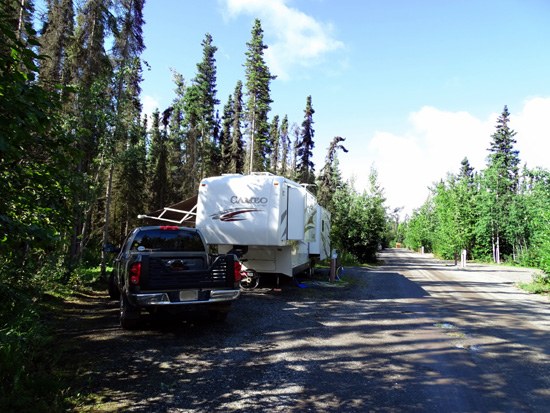
Temps were definitely lower last night -- 43 F. on our
thermometer -- but it felt quite warm in the sunshine during the day at
about 70 F. This is within Jim's and my ideal temperature range and it
was a gorgeous day to explore the outside villages and exhibits at the
Alaska Native Heritage Center.
VISITING THE ANHC
Jim needed parts for the truck (sway bar links) and time at the library
to upload/update some things on our computers. He dropped me off at the
Heritage Center and I spent 2½
hours soaking up Alaskan culture.
You can easily spend even more time at this excellent facility with all
the available exhibits, demonstrations, and programs that are conducted throughout the
day.
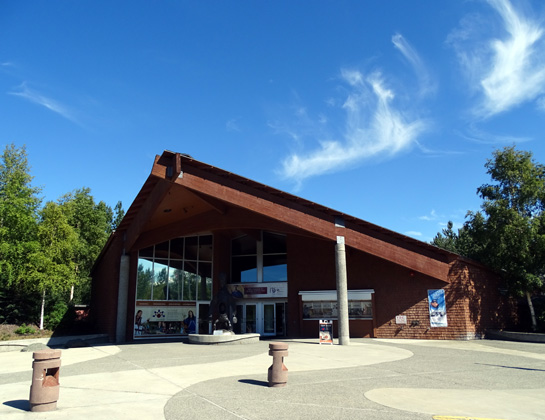
Cost for seniors and military is $21.15 for all day. You can also
purchase a reduced-price pass that includes both the Heritage Center and
the Anchorage Museum. I highly recommend visiting both.
I feel like I got my money's worth today watching the dancers,
listening to the dance interpretations, watching two young men doing
authentic Native Games, watching a storyteller make string figures while
he talked about his clan's culture, looking at the exhibits, watching
art & craft demonstrations, and wandering around the outdoor villages
representing the six different indigenous cultures.
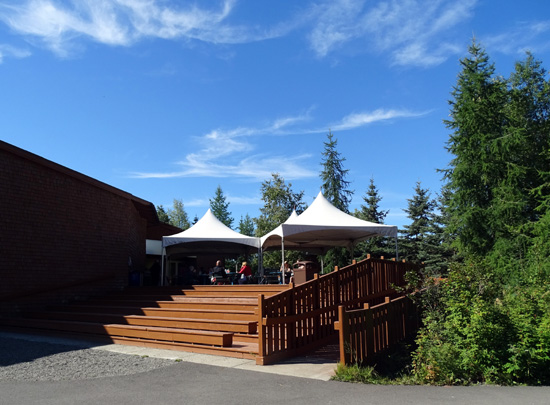
Dining al fresco on a beautiful day.
I also had lunch there. I was hoping for some native dishes but those
weren't offered. I got grilled chicken fettuccine and tasty rolls for
$9.
INDOORS AT THE WELCOME HOUSE
Many of the programs
and exhibits take place indoors in the large building called the Welcome
House.
This is where I looked at exhibits
and artist demonstrations and watched dancing, Native games, story-telling,
and singing:
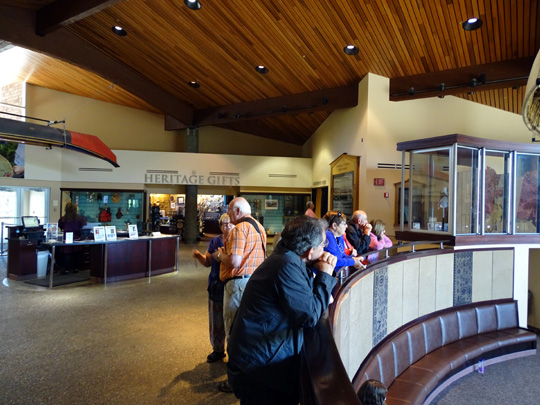
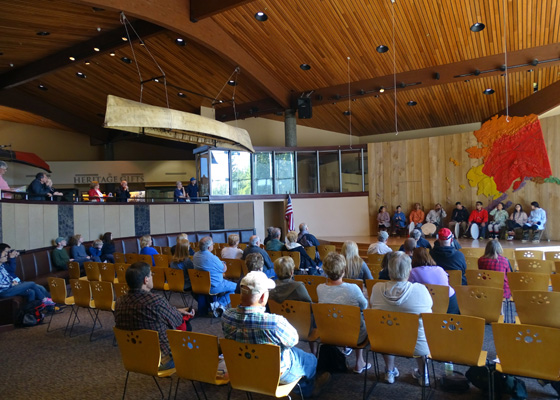
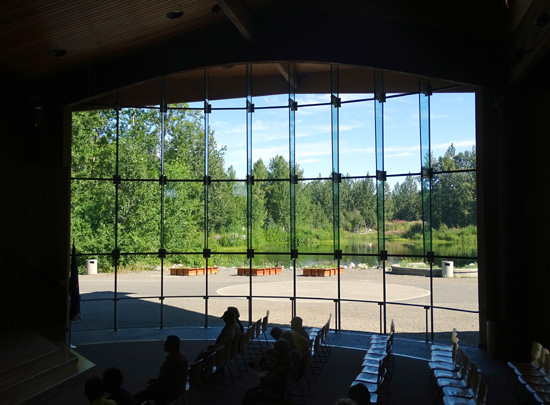
The window
wall in the auditorium looks out on the lake and Native villages.
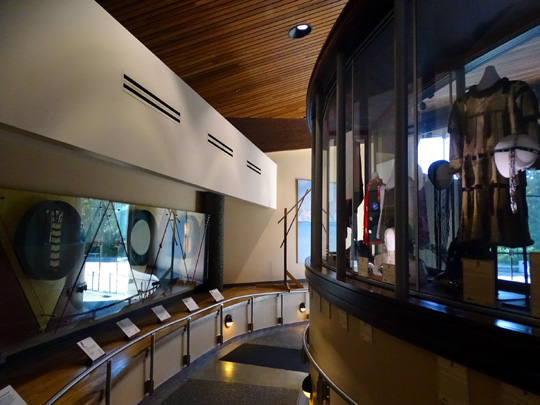
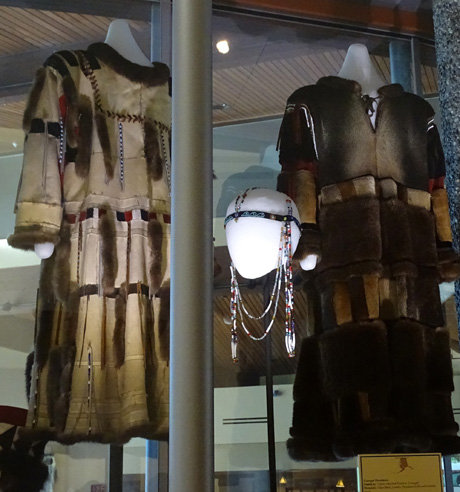
I watched the four young women in the next photos do two different
dances, once in the morning and again in the afternoon.
The Alaska map on the wall shows the general regions where the six
indigenous cultures lived. The purple of the Aleutian Island culture (Unangax, Alutiiq/Sugpiaq)
extends quite a ways to the SW on the wall. The green indicates the
coastal area bordering British Columbia (Tlingit, Haida, Tsimshian, Eyak
people):
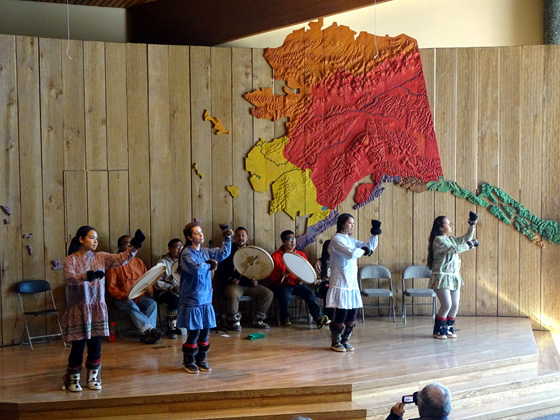
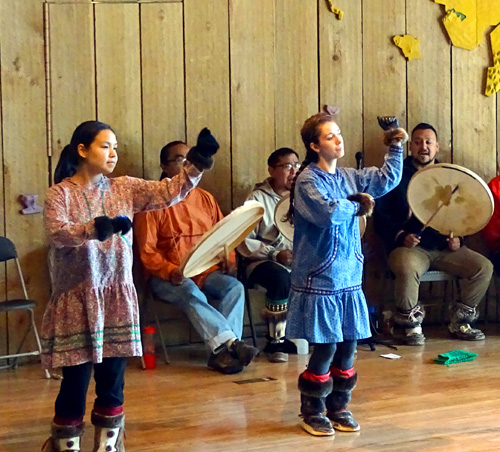
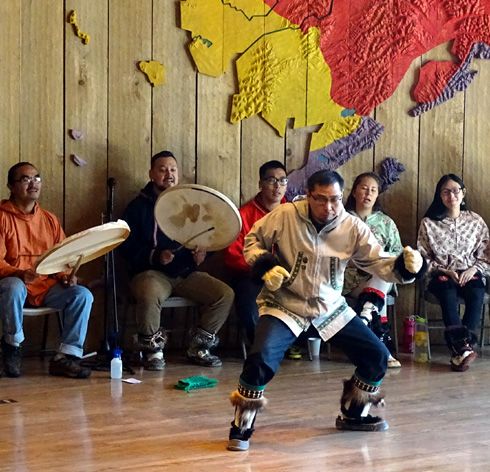
This fella was busy today; he also did the string
storytelling in the afternoon.
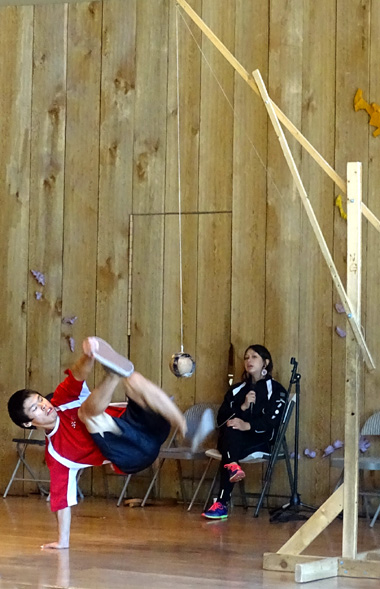
Two young men demonstrated some traditional
competitive
games; a young woman (in black) narrated.
There is also a gift shop and theater in the
Welcome House:
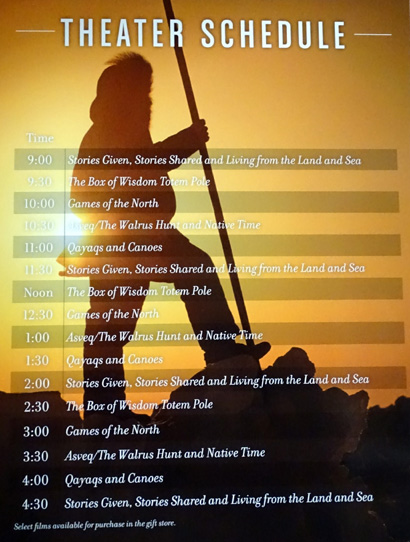
I didn't have time today to watch any of the
movies but I'm sure they are worthwhile. Although any purchases
from the gift shop would cost $$, the theater presentations are included in the cost of
entry to the ANHC.
OUTDOOR
VILLAGE REPLICAS
Since the
weather was so nice I really enjoyed walking around scenic Tiulana Lake to tour the
village replicas representing the six indigenous Alaskan cultures --
Athabascan, Yup'ik/Cup'ik, Inupiaq, Unangax, Alutiiq, and Tlingit/Haida/Eyak/Tsimshian:
.
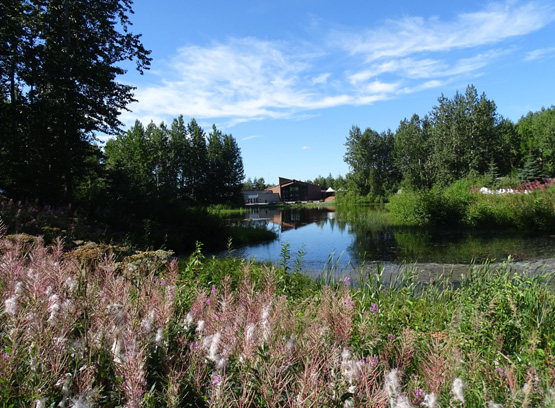
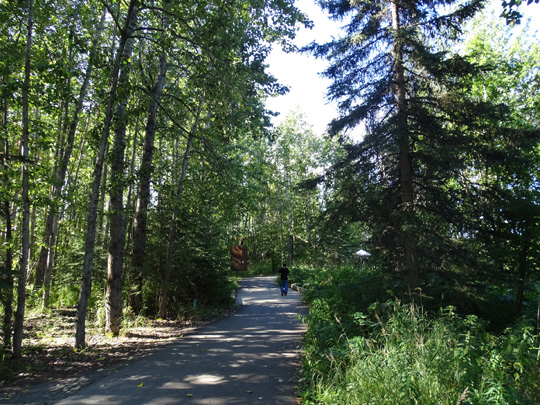
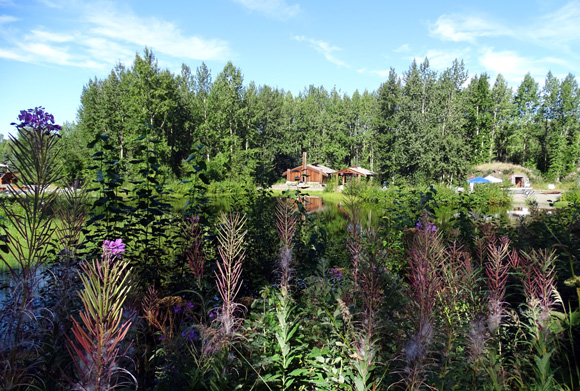
Each village
has several interpretive signs. Here are
photos of some of the dwellings and other features in each of the
cultures and just a little information about them:
1.
Athabascans were traditionally highly migratory, traveling in small
groups to hunt, fish, and trap.
Athabascan territory,
the largest area of all the Alaska Native people, is home to eleven different
linguistic groups who live along the major waterways such as the Yukon, Kenai,
and Copper Rivers. From winter villages to summer fish camps, they followed the
fish and game that provided food, shelter, and clothing:
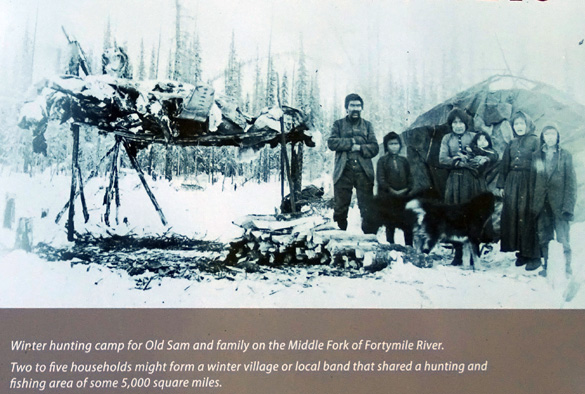
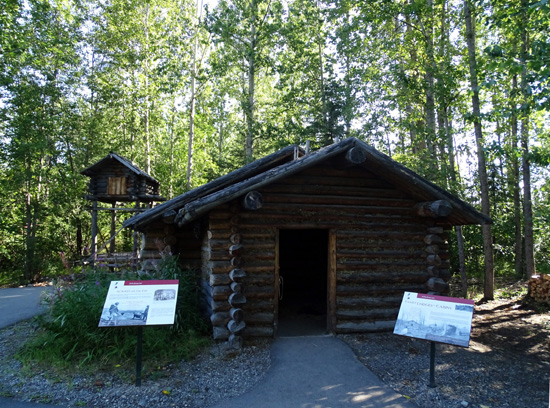
Typical
pole and log cabin built above ground or sunk in several feet for more
insulation
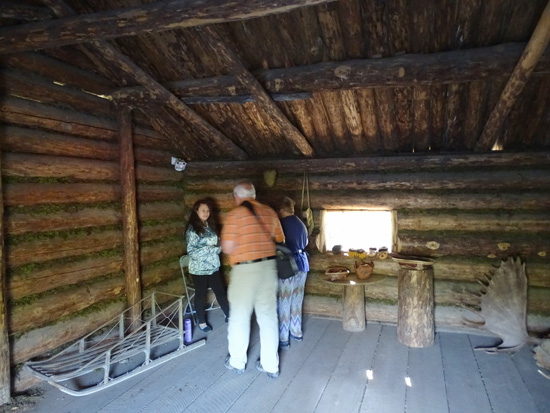
2. Yup'ik and Cup'ik peoples' homeland lies along a large delta
area west of what is now Anchorage. Numerous lakes and streams flow out
to the Bering Sea. Much of the land is tundra.
Along the coast the people relied on marine mammals, fish, berries, and
plants for subsistence. Inland they hunted caribou and moose and fished
for salmon and freshwater fish. Like the other indigenous groups, their
lives were dictated by seasonal cycles.
In this culture the women and children lived in separate wooden post and
beam structures from the men and older boys. There was a subterranean
winter entrance and a more open summer entrance to these dwellings.
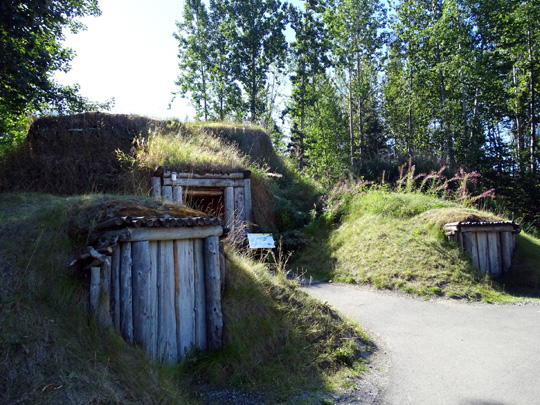
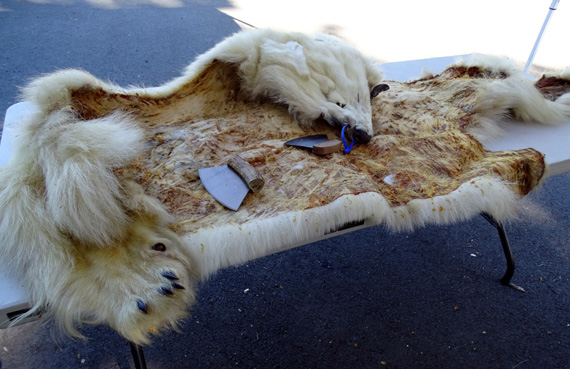
3. Inupiaq and St. Lawrence
Yup'ik territory is also quite large, occupying the far north and
northwestern part of what is now the state of Alaska.
Like other Native peoples, they
relied on subsistence hunting of sea (whales, walrus, seals, polar
bears) and land animals (sheep, ducks, geese, caribou, moose, etc.) and
gathering of other resources like fish and plants from the ocean,
rivers, and mountains. One whale could feed an entire village.
Winter villages had a large community house where clan members gathered
for meals, singing, dancing, story-telling, ceremonies, etc. The people
moved to skin tents in warmer weather where fish, plants, and berries
were plentiful.
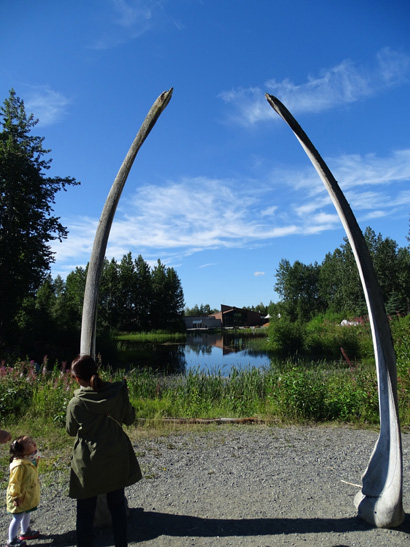
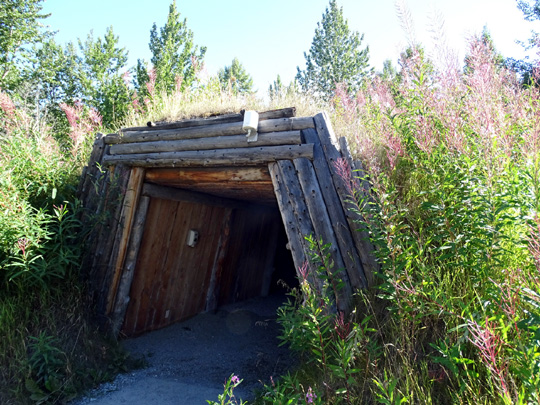
4. and 5. The Unangax and Alutiiq (Sugpiaq)
are maritime people living from Prince William Sound to the long
chain of Aleutians and Pribilof Islands southwest of mainland Alaska.
Their cultures have been shaped by the sea for thousands of years.
These seafaring people of the North Pacific Rim were expert whale
hunters and fishermen. They also hunted birds and collected roots,
berries, and plants. Caribou and mountain goats were important food
sources in the eastern region off the southern coast of mainland Alaska.
Like other Native Alaskan cultures, these people hunted whales and
believed that all animals deserved respect and proper treatment in both
life and death. Many Alaska natives also believe that the spirit of an
animal, taken in a respectful manner, will return to an area and
sacrifice itself once again so that the people might survive.
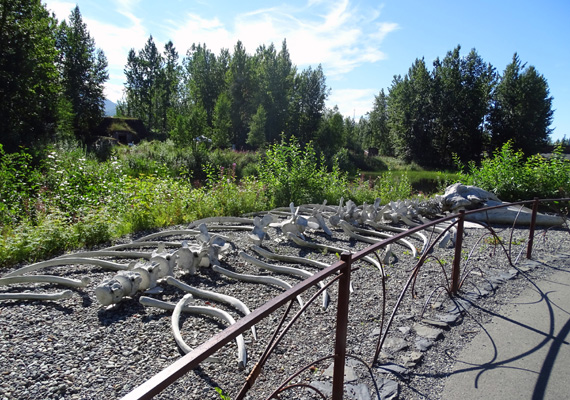
Above and below: skeleton of a grey whale
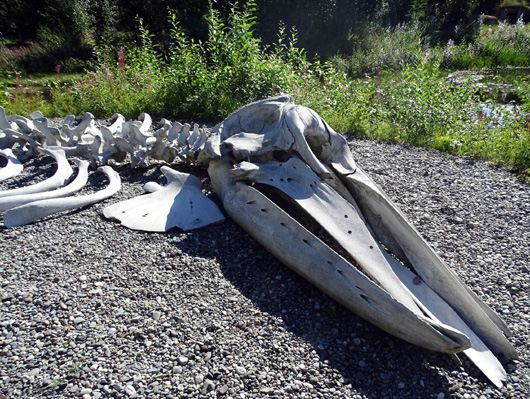
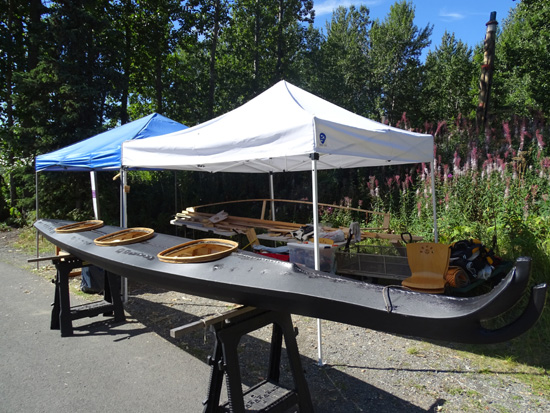
Both of these groups used to build large semi-subterranean dwellings
that housed multiple families. They were framed with whale bone or
driftwood and covered with sod -- same principle as the
earth-sheltered houses people still build in the Lower 48, only larger!
(I wanted a modern version of those in my 30-something, Mother Earth days.)
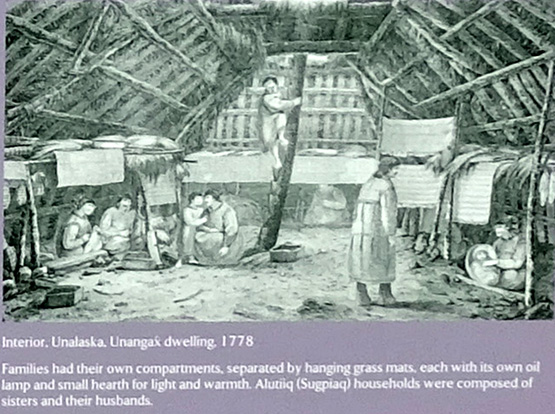
6. Eyak, Tlingit, Haida, Tsimshian peoples lived in the Copper
River-southeast panhandle region, an area rich in natural resources. The
temperate rainforest produces many tall trees; wood was their
most important commodity. Food was plentiful -- fish, game, wild
fruits, and vegetables.
Similar to other Native Alaskan cultures, these groups lived
between the forest and sea, with both summer and winter homes chosen for
their easy access to resources and protection from storms and enemies.
These four cultures also built large clan or "long" houses with cedar
posts and spruce beams. Formline art on the houses identified the
owners, who had the rights to specific crests as designs on totem poles,
clothing, houses, and ceremonial regalia:
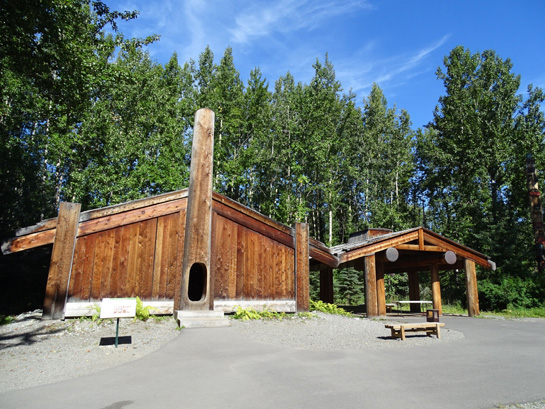
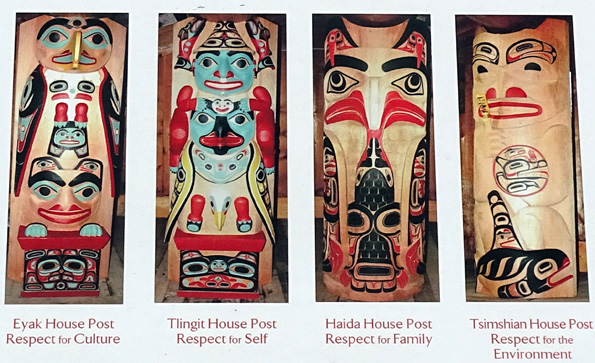
All of these six Native Alaskan cultures have
many beliefs and customs in common but each also has some differences
based on location and other factors. It was enlightening to read all the
interpretive panels either on site or when I was editing my photos.
Although their lives were difficult because of extreme weather and other
factors, these various clan systems operated quite skillfully and efficiently.
There were
interpreters in some of the houses that were happy to answer any
questions and offer information about their traditional ways of life.
I didn't get
to see any of the demonstrations of traditional hunting, fishing,
building kayaks, or constructing dwellings; all the folks doing
the demos must have been at lunch during the time I was out there (or
perhaps they don't do as many demos on weekdays).
SLED DOGS
I was
surprised in the Inupiaq village an area devoted to sled dogs owned by
John Baker, an Iditarod champion:
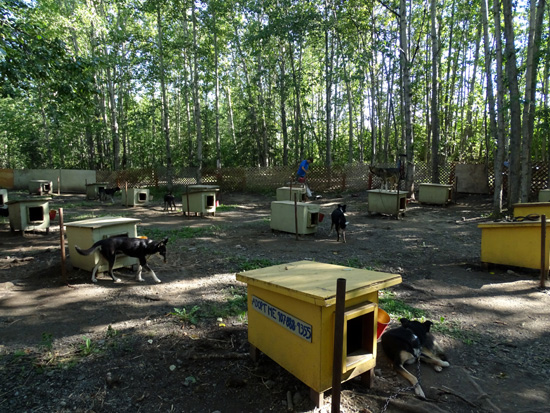
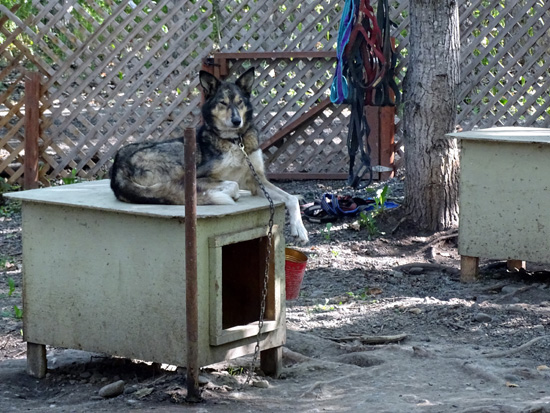
Rides and a
presentation re: the history of sled dogs in Alaska are offered
for $10/person.
STRING STORY-TELLER
After eating lunch outside I went back inside
for a fascinating demonstration of Native string art by a young man who
learned the craft from his father and grandfather. The running
commentary as he made each figure was very interesting.
I don't remember the significance of all the figures or stories so
I'll let these photos speak for themselves:
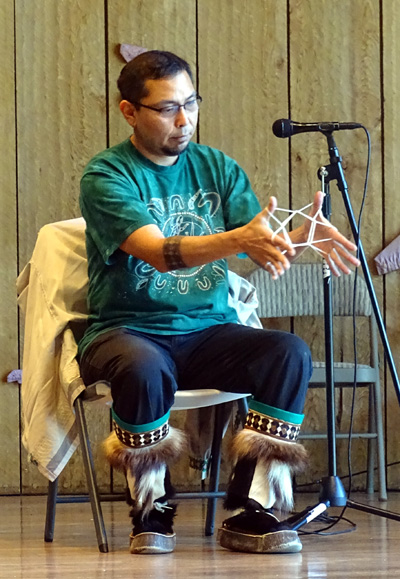
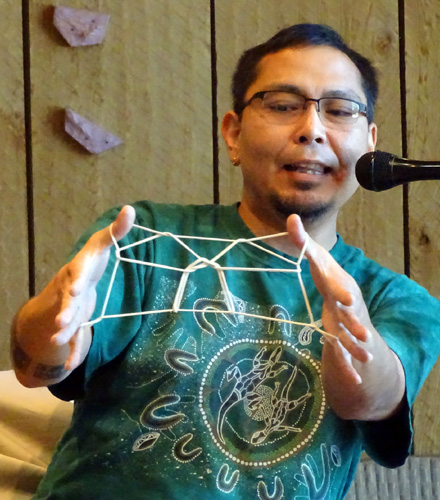
Those two
purple things on the wall depict Aleutian Islands on the large 3-D map .
. .
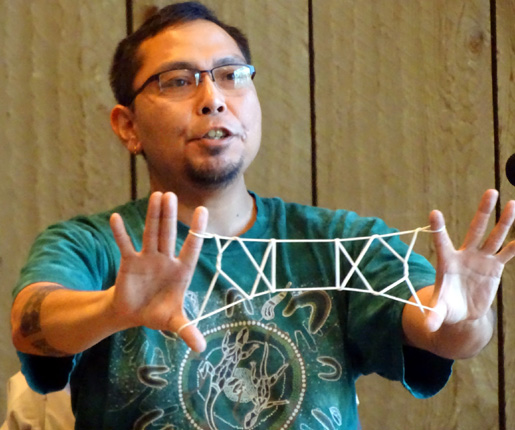
Thank
goodness for a good zoom lens and automatic focusing;
I was
sitting pretty far back in the auditorium and I never use a tripod.
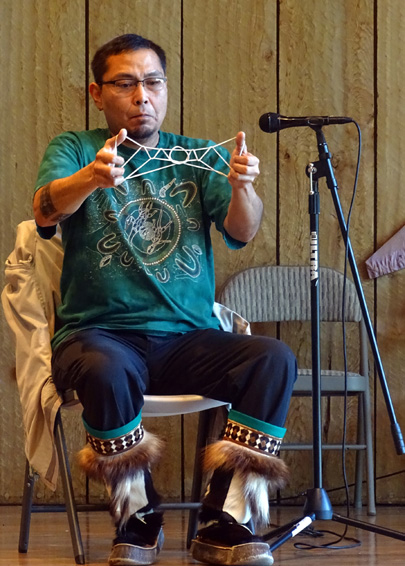

The narrator morphed from one figure to the next quite skillfully. It
was fascinating to watch him and listen to his stories.
RESPECT FOR OTHER CULTURES
Just before I left I watched a second session of dancing and talk about
Native culture.
The speaker eloquently discussed why it is so important to the
indigenous Alaskan groups to educate both their younger family members
and the public about their cultural values and traditions.

Russian Orthodox church in Old Town Kenai
(July, 2012)
So much of their culture has been lost in the last 200 years. They
relied on oral history until about 50 years ago. Various Christian
missionaries (primarily American and Russian) tried to change the Native Alaskan
cultures by forbidding dancing and other traditions.
The people who lived in the Kodiak area were most direly affected,
losing almost 100 years of their culture to outsiders.

This angers me as much as the treatment the Native Americans in the
Lower 48 have endured since white and Hispanic people decided that land
should be theirs. I think it is despicable for any ethnic or
religious group to try to force their will and beliefs
on other people who are deemed to be "uncivilized" or "unsaved"
or simply "in the way."
Give it up. Don't be so presumptuous to think that everyone else should
have the same beliefs you do. Each culture has its own beliefs and customs.
Respect that.
End of rant.

Totem in the Eyak/Tlingit/Haida/Tsimshian
village
I highly recommend every visitor to Alaska experience
this
and other Native Alaskan museums, visitor centers, festivals, and other
venues and events offered during the summer. After all, one good reason
for visiting Alaska in the first place is to learn about its history and culture.
Despite my emphasis on scenery and critters on this website, even *I*
realize it's not all about the scenery and wildlife.
Next entry: blueberry heaven on Rendezvous and
Gordon-Lyon Peaks
Happy trails,
Sue
"Runtrails & Company" - Sue Norwood, Jim O'Neil,
Cody the ultra Lab, and Casey-pup
Previous
Next
© 2015 Sue Norwood and Jim O'Neil










































